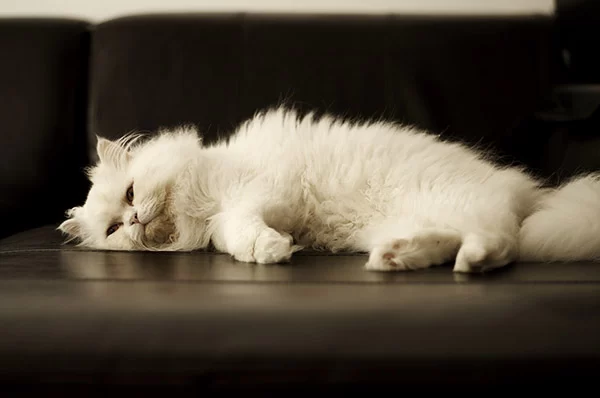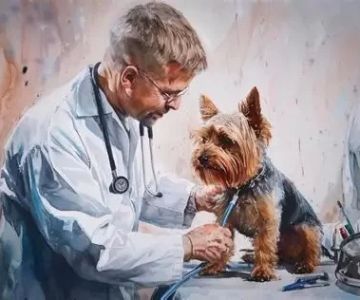- understanding-kidney-disease-in-cats
- common-signs-of-kidney-disease
- diagnosing-kidney-disease-in-cats
- early-intervention-and-treatment-options
- real-life-case-studies
- when-to-seek-professional-help
1. Understanding Kidney Disease in Cats
Kidney disease in cats is a serious but often preventable condition, especially when detected early. Cats, particularly older ones, are prone to kidney failure, which can happen gradually over time. The kidneys play a critical role in filtering waste, regulating electrolytes, and maintaining hydration, so when they start to fail, the body suffers. Understanding the signs of kidney disease in cats can help you catch it before it progresses too far, improving your cat's chances of recovery and quality of life.
Kidney disease is divided into two main types: acute kidney disease and chronic kidney disease (CKD). Acute kidney failure happens suddenly, often due to toxins or infections, while CKD develops over time and is more common in senior cats. Both types share common symptoms, but early detection can make a big difference in treatment outcomes.
2. Common Signs of Kidney Disease in Cats
2.1 Increased Thirst and Urination
One of the most noticeable early signs of kidney disease in cats is excessive thirst, followed by increased urination. Cats with kidney problems often drink more water than usual because their kidneys aren't filtering efficiently, and they become dehydrated. If you notice your cat visiting the water bowl more frequently or urinating more often, it’s worth paying attention to.
2.2 Loss of Appetite and Weight Loss
A decrease in appetite is another common symptom. Cats with kidney disease often feel nauseous, which leads them to avoid food. Weight loss can quickly follow, as your cat’s body starts to break down muscle for energy. If your cat is losing weight without any clear reason, it could be a sign of kidney disease, especially if combined with other symptoms.
2.3 Vomiting and Dehydration
Vomiting is a typical symptom of kidney disease, especially when the toxins that the kidneys are meant to filter out build up in the bloodstream. Dehydration occurs because the kidneys can no longer conserve water efficiently, causing your cat to drink more but still remain dehydrated. If you notice your cat vomiting frequently, it’s a good idea to visit your vet.
2.4 Bad Breath and Oral Ulcers
As kidney disease progresses, toxins can build up in your cat’s system and affect their breath, which often takes on a strong, ammonia-like odor. Additionally, you might notice sores or ulcers in their mouth. This is a result of toxins circulating through the bloodstream and affecting oral health.
2.5 Lethargy and Behavioral Changes
Kidney disease can also make your cat feel lethargic and weak. They may sleep more than usual, avoid interacting with you, or seem unusually irritable. These behavioral changes can be subtle but are important indicators that something is wrong. Cats often hide their pain, so it’s essential to keep an eye out for these more general symptoms as well.
3. Diagnosing Kidney Disease in Cats
3.1 Veterinary Examination
If you notice any of the above signs, it’s essential to consult with a veterinarian immediately. A thorough physical examination is the first step in diagnosing kidney disease. The vet will palpate your cat’s abdomen to check for kidney enlargement or pain and might listen for heart or lung issues that could indicate systemic problems.
3.2 Blood Tests and Urinalysis
Blood tests are crucial for diagnosing kidney disease. Elevated levels of certain waste products like creatinine and urea in the blood can signal kidney dysfunction. A urinalysis will also help determine how well the kidneys are concentrating urine, which can reveal early signs of kidney failure even if blood tests seem normal.
3.3 Ultrasound or X-rays
In some cases, your vet may recommend imaging tests like an ultrasound or X-rays. These can help assess the size and structure of the kidneys and identify any underlying issues, such as cysts or tumors, which could be contributing to the kidney failure.
4. Early Intervention and Treatment Options
4.1 Diet Modification
When diagnosed early, kidney disease can often be managed with dietary changes. Special kidney-friendly cat food is lower in phosphorus and protein to reduce the kidneys' workload. If your cat is diagnosed with early-stage kidney disease, a prescription diet can help slow the progression of the disease and improve their quality of life.
4.2 Fluid Therapy and Hydration
One of the most effective treatments for kidney disease in cats is fluid therapy. This helps to rehydrate your cat and flush out toxins from their body. Many cats with kidney disease also benefit from subcutaneous fluid injections, which can be done at home with guidance from your veterinarian. Keeping your cat hydrated is essential for managing their condition.
4.3 Medications and Supplements
Depending on the stage of kidney disease, your veterinarian may prescribe medications to help manage symptoms like high blood pressure, anemia, or nausea. Certain supplements, such as omega-3 fatty acids or potassium, can also support kidney function and overall health. Early intervention can significantly slow down the progression of the disease.
5. Real-Life Case Studies
5.1 Case of Simba: Early Detection
Simba, a 10-year-old tabby, had been drinking a lot more water than usual. His owner, Maria, noticed him urinating frequently but didn't think much of it until Simba started vomiting after meals. After a vet visit and blood tests, Simba was diagnosed with early-stage kidney disease. Thanks to a change in diet and regular fluid therapy, Simba has been stable for over a year now, and Maria continues to monitor his condition closely.
5.2 Case of Whiskers: Advanced Kidney Disease
Whiskers, a senior cat, had advanced kidney disease when his owner, John, brought him to Hidden Brook Veterinary. Whiskers had lost a lot of weight and was lethargic. After receiving intravenous fluids and a specialized kidney diet, Whiskers' symptoms improved. However, due to the advanced nature of his condition, he remains on a strict management plan that includes regular vet visits and daily fluid administration.
6. When to Seek Professional Help
6.1 Ongoing Monitoring
If your cat shows any signs of kidney disease, prompt veterinary consultation is essential. Early detection and ongoing monitoring are critical to managing the condition and improving your cat's prognosis. If you’re uncertain about any changes in your cat's behavior or health, don’t hesitate to reach out to a professional. Hidden Brook Veterinary is always here to guide you through diagnosis, treatment, and managing your cat’s health.
6.2 Preventative Care
Regular vet visits are an essential part of maintaining your cat's health, especially as they age. Even if your cat shows no signs of kidney disease, routine blood work and urine tests can help catch potential issues before they become severe. Preventative care is key to giving your feline friend the best possible quality of life.












